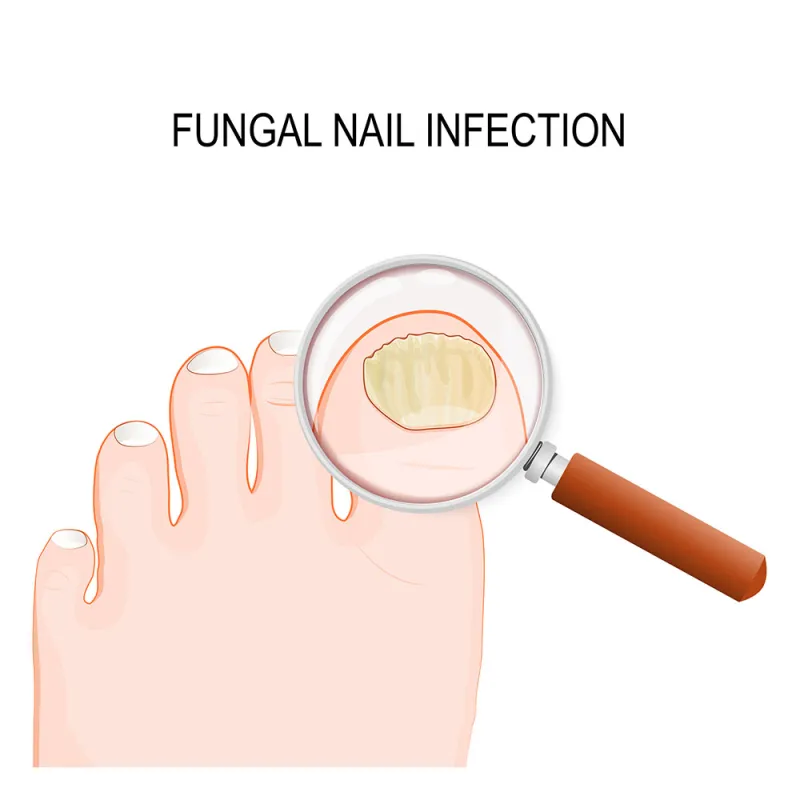Want to understand your body and your nutrition deficiencies? Just look at your fingernails! Your nails alone can give you a lot of clues about what’s going on in your body, particularly as it relates to your overall nutrients and your foods.
Overall, if you see issues when you look at your nails, it’ll probably come down to deficiencies in fat-soluble vitamins, trace minerals, and B vitamins.
Let’s go through it step by step so you can understand what’s going on with your nails and what it means for your overall health.
Common Nail Conditions and What They Mean
Vertical Ridges
Vertical ridges on the nail bed can signify a slow thyroid – or hypothyroid condition. Other common signs of this thyroid condition include:
- Loss of collagen in the back of the arm
- Problems with hair loss
- Bags underneath the eyes
- Loss of eyebrow on the outer part
If you have any of these symptoms, the thyroid is likely the culprit.
That said, vertical ridges could also signify a deficiency in Vitamin B12 or iron. If you’re deficient in iron, though, you’re probably only going to have one or two ridges which are going to be a little bit bigger. To solve this deficiency, we recommend a diet rich in vitamin B12 and iron (rather than supplements). That includes things like:
- Grass-fed beef, organ meat, and chicken
- Fish and shellfish like trout, salmon, and tuna
- Spinach and broccoli
Brittle Nails

If your fingernails are brittle and they break easily, it’s usually due to a deficiency in folate or biotin – though it could be a sign of thyroid disease.
Folate, on one hand, comes from leafy greens. People who have nail brittleness usually do not consume enough vegetables.
Similarly, biotin is related to the flora and your good bacteria. If your flora is healthy and balanced, your microbes can actually make biotin on its own. However, if you have a history of taking antibiotics or you have some digestive issue, you may be unable to create enough biotin. This causes brittle nails because biotin is involved in the strengthening of proteins, amino acids, and collagen.
There are also a few other ways that you can become deficient in biotin. These include:
- Eating a lot of raw egg whites
- Eating a lot of fried foods
- Imbalance in the digestive system
If you have a biotin issue, you’ll also see peeling on your cuticle, hangnails, and other problems.
This can be fixed using nutritional yeast. I recommend non-fortified nutritional yeast, which is free of synthetics.
Fungal Infection

This condition appears as a yellowish or white discoloration on your nail bed. While this can be caused by a larger issue like thyroid disease, lung disease, diabetes, and psoriasis, a fungal infection is usually also due to low biotin. This, again, is ultimately caused by an imbalance inside your gut.
Along with incorporating the nutritional yeast, take silica as well to strengthen your nail and help you return to a healthy, fungus-free nailbed.
White Spot
If you have small, white spots on your nails it’s probably because of a zinc deficiency. Why?
Refined carbohydrates and sugar deplete zinc. So if the white spot is right in the center of your nail – and the fingernail grows every 6 months – we know you probably had a birthday party about 6 months ago and you ate the entire cake. It’s a pretty interesting and clear cause and effect.
That said, stress, IBS, digestive issues, Crohn’s, and other digestive problems – even low stomach acid – will also deplete zinc.
This zinc deficiency is usually indicative of a bigger problem with trace minerals. Trace minerals are minerals needed in smaller amounts in the body, including selenium, iodine, and zinc.
Most people are deficient in trace minerals. Why? Trace minerals are no longer in the soils unless you get food from places that have volcanic soils, so most people don’t have easy access to them anymore. That said, you can add foods naturally high in trace minerals, including grass-fed beef, shellfish, nuts, beans, and whole grains.
Horizontal White Lines
Horizontal white lines on the nail are usually due to low calcium. That said, horizontal lines that are thicker and not as white are usually a deficiency of Vitamin B3 or niacin.
Brown or Grey Color
If your fingernail is slightly brown or grey, the condition could signify low vitamin B12. A B12 deficiency can occur:
- If you’re a vegan and not taking B12 because B12 comes from animal products.
- If you’ve had gastric bypass, which affects the digestion and the absorption of B12.
- If you have low stomach acid.
Again, the best solution here is to eat a diet rich in natural B12s.
Clubbed Nail
If your nail is clubbed or concave, that could be a problem with the liver or kidney.
Somewhat surprisingly, issues like fatty liver or low functioning liver usually come from a deficiency in methionine and choline. The solution, then, is to consume a diet that’s high in these two compounds. The foods that are loaded with choline are:
- Egg yolks
- Liver
- Grass-fed dairy
- Cruciferous vegetables
Methionine-rich foods include:
- Beef
- Chicken
- Pork
- Nuts
- Fish
- Eggs
Overall, the goal is to consume a diet that’s actually high in protein and fat.
Excessively White With Pink Strip on Top
This, too, could be B12, plain and simple.
Horizontal Ridges
This is generally due to a Vitamin B1 deficiency. Vitamin B1, as the name suggests, is the first B vitamin that was ever discovered. A deficiency in B1 creates a series of problems – and the nail is just a good way to identify if you’re deficient. That said, the other problems that can come with a B1 deficiency include:
Cyanosis: This has to do with the circulation of your nail. So if you ever look at people and see that their nail is way too white or that it has a bluish tinge, which is a B1 deficiency. Vitamin B1 is involved in circulation.
Enlarged heart on the right side. When you’re deficient in B1, the heart gets weaker and starts to atrophy. So the B vitamins are intimately involved in heart function.
Problems with eye muscles: Wandering eyes, cross-eyed, etc is a problem with the nerves to the eye – this is also influenced by B1.
Edema in the ankles.
So how does this even happen? Well, the history of B1 deficiency starts with people consuming too much-polished rice or refined rice. This rice is completely void of all of the nutrition that comes in whole rice – so eating it creates a B1 deficiency. The same thing happens with grains, which is why many manufacturers have tried to solve the issue and enrich flour (even though it’s really enriched with synthetic vitamins). In short, B1 deficiencies are created from consuming too many refined foods, particularly refined grains, white rice, and flour. Cut these out and you’ll solve the problem.
Completely White or Blue Nail
This usually signifies a problem with oxygen, and it can be indicative of a serious illness like anemia, heart failure, or liver disease. More often than not, though, this is also due to a deficiency in B1 or thiamine.
As you can see, the common theme is low B vitamins and low minerals. Both of those nutrients are involved as coenzymes in proteins (and your nail is mostly protein). So it’s not just a matter of consuming protein, but also of getting enough nutrients from your foods to turn on certain enzymes to make the protein grow correctly.
The Larger Context: Hair, Skin, and Nails
Overall, it’s important that you pay attention to your body and what it’s trying to tell you. The big problem in healthcare and medical treatment today is that it’s usually all about managing symptoms rather than treating the root cause of the issue. Don’t fall into this trap! If you see that something is not quite right, recognize that there’s a reason for this and there’s something going on in your system that needs to be addressed.
Get a handle on your nutritional health, and you’ll very likely be symptom-free for years to come.
Up Next:
- The Missing Nutrient in Hair and Skin
- What Causes Spooned Nail
- Why Protein Does Not Help Hair Nails and Skin


















